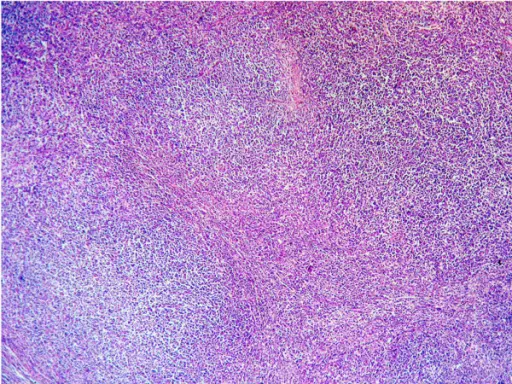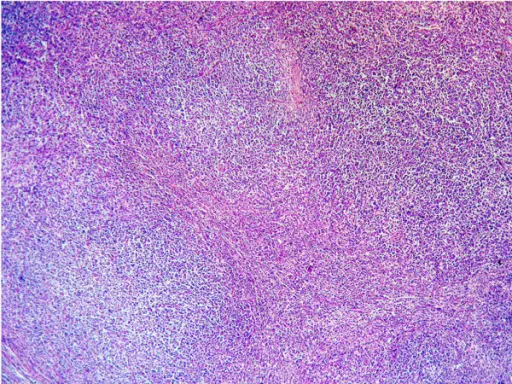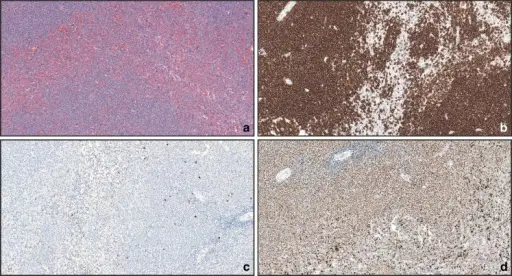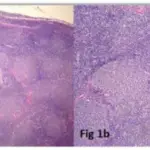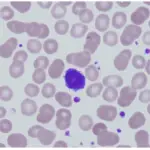Marginal zone lymphoma is a slow-growing type of B-cell non-Hodgkin lymphoma that begins forming in certain areas (marginal zones) of lymph tissue. There are three types of marginal zone lymphomas: the extranodal MZL (EMZL) of mucosa-associated lymphoid tissue (MALT or gastric GALT), the splenic MZL, and the nodal MZL.
What is the Pathology of Marginal Zone Lymphoma?
The pathology of marginal zone lymphoma is:
-Etiology: The cause of marginal zone lymphoma is unknown. There is a lot of evidence supporting the notion that antigen stimulation is important for the development and progression of marginal zone lymphoma.
-Genes involved: NOTCH gene, KLF2 gene, PTPRD gene.
-Pathogenesis: The sequence of events that lead to marginal zone lymphoma often associated with chronic antigenic stimulation of post-germinal center marginal zone B-lymphocytes.
-Histology: The histology associated with marginal zone lymphoma shows small to medium sized lymphocytes surrounding a reactive follicle. Plasmacytic differentiation is common.
How does Marginal Zone Lymphoma Present?
Patients with marginal zone lymphoma typically involve women than men present at age range of 60 years (average age at diagnosis). The symptoms, features, and clinical findings associated with marginal zone lymphoma include fever without an infection, night sweats, unexplained weight loss, skin rash, chest or abdominal pain and tiredness.
How is Marginal Zone Lymphoma Diagnosed?
Marginal zone lymphoma is diagnosed by X-rays, ultrasounds, CT scans, and MRI scans.
How is Marginal Zone Lymphoma Treated?
Marginal zone lymphoma is treated by chemotherapy to kill cancer cells, radiation to shrink tumors and surgery to remove tumors.
What is the Prognosis of Marginal Zone Lymphoma?
The prognosis of marginal zone lymphoma is good and most patients experience long survival.

